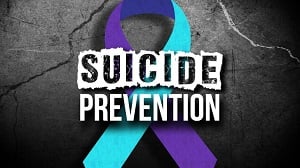Predicting and Preventing Suicide: Where Are We?
Predicting and Preventing Suicide: Where Are We?

Suicide is one of the most devastating public health problems faced by society today. In the United States, suicide is the 10th leading cause of death (Centers for Disease Control and Prevention [CDC], 2015). Over 44,000 Americans take their own lives each year, which works out to about 120 suicides each day, just in the U.S. (CDC, 2015). This means that we are each more likely to die by our own hand than someone else’s (World Health Organization [WHO], 2012). For every suicide death, there are also another 10 to 25 non-fatal suicide attempts (CDC, 2015; Crosby, Gfroerer, Han, Ortega, & Parks, 2011). These statistics are alarming.
The good news is that during the past half century, research on suicide has increased substantially. As a result, we’ve learned a great deal about suicide, including the factors that raise a person’s risk. For example, we’ve discovered that women are more likely to attempt suicide and men are more likely to die by suicide (CDC, 2015; Nock et al., 2008). We also now know that a history of self-injury, certain mental health problems (like depression, posttraumatic stress disorder, and substance use disorders), and chronic health conditions are associated with increased risk (Borges et al., 2010; Nock et al., 2009; Nock et al., 2010; WHO, 2016). We’ve learned that there is no one cause of, or “gene for” suicide (Kendler, 2005), but that suicide is a result of many interacting risk factors and environmental stressors (Franklin, Ribeiro, et al., 2016; Nock, 2016). Researchers are now building complex statistical models to more accurately predict who will attempt suicide in the future so that ultimately, we can identify and intervene with those at highest risk (e.g., Kessler et al., 2015).
We are also beginning to understand the immediate warning signs of suicidal behavior. Some things to look out for are when a person is isolating themselves, sleeping too much or not enough, using more alcohol or drugs, or acting recklessly (American Association of Suicidology [AAS], 2017; American Foundation for Suicide Prevention [AFSP], 2017; Rudd et al., 2006). Doing things to prepare for suicide (such as researching ways to kill oneself or telling loved ones goodbye) are especially important warning signs (AFSP, 2017). When someone at risk for suicide appears especially anxious, agitated, or irritable, they may be in more immediate danger (AAS, 2017; AFSP, 2017). Much of this information is based on clinical observation, so we still need more research to confirm the most critical signals of suicide risk.
We are starting to identify treatment strategies that may reduce suicidal thoughts and behaviors. Certain medications (such as antidepressants) and psychotherapies (including cognitive-behavioral therapy [CBT] and dialectical behavior therapy [DBT]) are promising, but many more studies of these (and other novel) treatments are still needed (Brown & Jager-Hyman, 2014; Glenn, Franklin, & Nock, 2015; Zalsman et al., 2016). Researchers also are developing different ways of delivering treatment that give many more people access to care, like online therapies and mental health apps (Franklin, Fox, et al., 2016; Nock, 2016).
If you are concerned about someone you know, take action. This may involve asking them sensitive but direct questions about whether they are having thoughts about not wanting to be alive or hurting themselves. Asking someone about suicide will not make them more likely to act. In fact, having the opportunity to talk openly about suicidal thoughts can be a relief to someone who is struggling. Listen calmly and without judgment. Most importantly, take their responses seriously. If you think they might be at risk, encourage them to get professional help (such as calling their doctor/therapist or a suicide prevention hotline). If you are concerned about their immediate safety, call 911 or the local emergency number right away.
We still have a long way to go in preventing suicide on a large scale. This will be no easy task. However, we are hopeful that with increased awareness and continued progress in suicide research, countless lives will be saved.
Additional Resources:
- American Association of Suicidology: http://www.suicidology.org/
- American Foundation for Suicide Prevention: https://afsp.org
- National Institute of Mental Health – Suicide Prevention: https://www.nimh.nih.gov/health/topics/suicide-prevention/index.shtml
- ADAA provides free webinars (many focused on suicide and prevention)
- Learn more about suicide and prevention
- Read personal stories of triumph
- Join ADAA’s free, anonymous online peer-to-peer support group
- Subscribe to ADAA’s free monthly email newsletter
Co-written by Matthew Nock - Professor in the Department of Psychology at Harvard University and is a leading researcher in the prediction and prevention of suicide and self-harm. He has published over 150 papers and received several awards, including a MacArthur Fellowship (aka “Genius Award”), and continues to use novel and cutting-edge methods across several multi-disciplinary collaborations to advance knowledge in the field.












